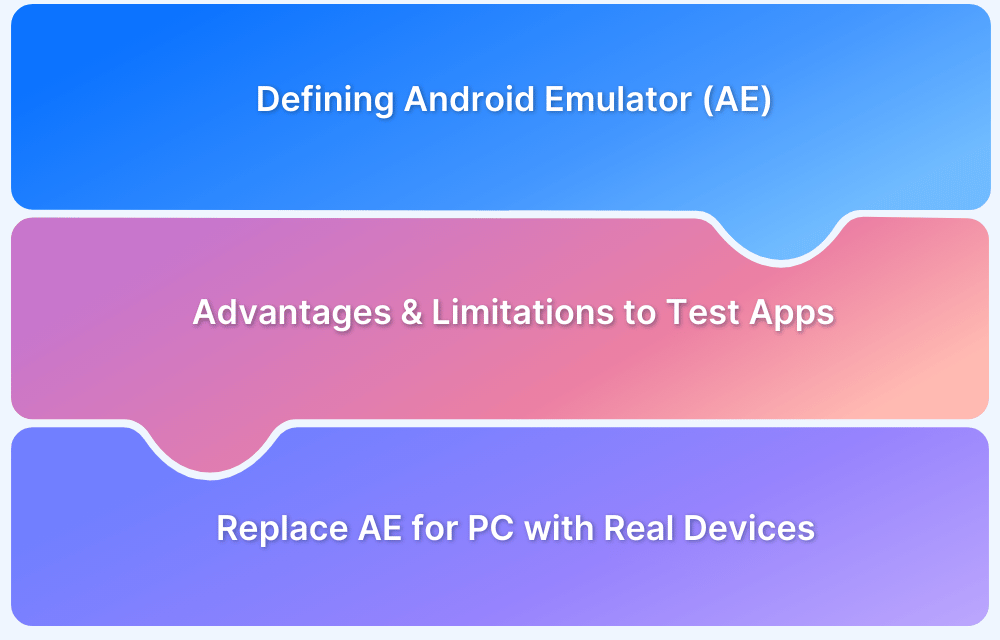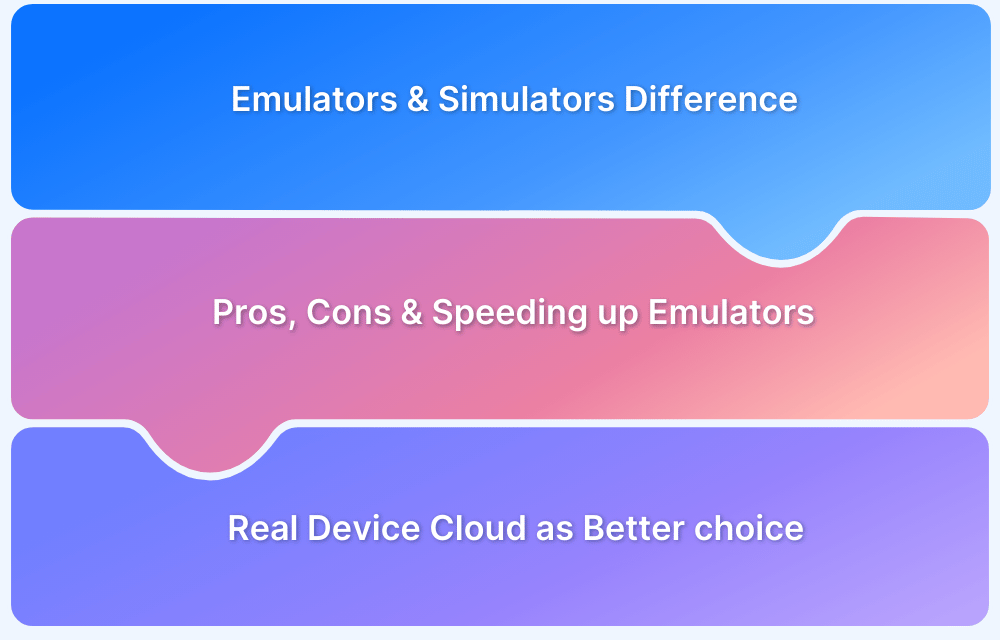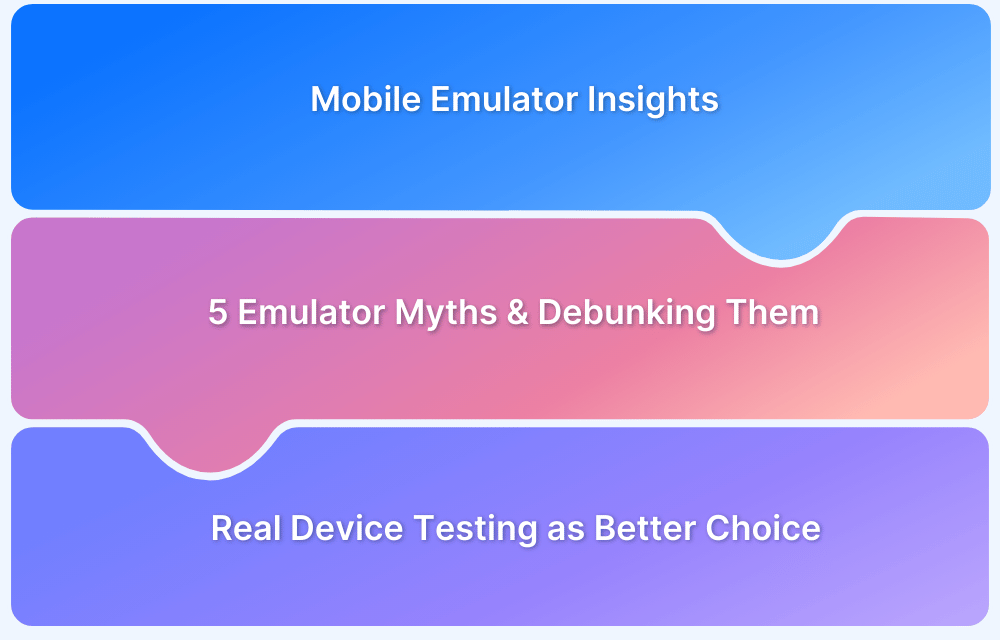Testing on Mac is essential for ensuring apps and websites behave as expected in real user conditions. While Mac emulators can help early in the development cycle, relying only on them can lead to inaccurate results and missed bugs.
Overview
What are Mac Emulators and Why Use Them?
- Virtual environments that mimic macOS on non-Mac systems.
- Useful for early-stage testing and validating basic functionality without needing real hardware.
- Cost-effective and quick to set up for initial QA checks.
Why Mac Emulators Are Not Enough
- Performance gaps: Emulators consume heavy resources and often lag.
- Architecture differences: Code compiles differently (x86 vs ARM), causing inconsistent behavior.
- Limited feature access: APIs like camera, microphone, and push notifications may not work.
- UI/UX mismatches: Screen size, gestures, and visual rendering differ from real devices.
- Security and debugging issues: Non-Apple emulators pose risks, while Xcode simulators offer limited debugging support.
Why Test on Real Mac Devices
- Real-world accuracy: Validate performance, UI, and device-specific features exactly as users experience them.
- Full feature coverage: Test APIs, sensors, network, accessibility, and more.
- Improved debugging: Access to logs, performance data, and real-world anomalies.
- Scalability: Real device clouds (like BrowserStack) offer multiple macOS versions and instant test access without buying hardware.
Best Practice: Combine Both Approaches
- Use emulators for early functional testing and quick iteration.
- Switch to real Mac devices for final validation before production to catch bugs and ensure user-ready quality.
This article explains the differences between Mac emulators and real devices, their pros and cons, and why combining both is the most effective testing strategy.
Disadvantages of using Mac emulators for software testing
- You’ll be dealing with performance issues from Day 1. Emulators often require heavy resource usage and will result in frequent lagging and general underperformance. Xcode, for instance, consumes a lot of memory, around 12GB + including simulators, documentation, auxiliary tools, and the like.On top of that, if you use XCode in-built Git for your code repo, expect more storage consumption since every small change is recorded and saved.
- If you’re running an app in a Mac simulator, it is compiled for the x86 architecture. On an actual Mac or Apple device, it is compiled for the ARM architecture. The code compiles differently, which means you’re not testing the same codebase on the emulator/simulator and the real device.
- Certain APIs, like the ones for push notifications, camera, and microphone are simply not available within the emulator/simulator. Therefore, you literally cannot test your app’s compatibility with these features. This would be a major issue if you’re testing apps that depend in any way on these device capabilities.
- There is a stark difference in the user experience provided by an emulator/simulator. For example, on emulators, you click on buttons that appear more prominent and are easier to click. On an actual Mac, buttons and other element sizes might not be the same, which will make the UI/UX entirely different from your test environment.
- Generally, if you are using any emulator but Xcode, you will risk dealing with security issues like unauthorized data access. Xcode, as explained above will drain your workstation in terms of memory and other computing resources.
- If you’re using Xcode, you may not be able to find much information when it comes to debugging or solving any problems emerging during development or testing. This is due to an existing Apple NDA that applies to Xcode development.
- Xcode doesn’t support tabbed environments, making it hard to work with multiple windows.
The Solution? Test on real macOS installed on real Macbooks
No, you absolutely do not have to buy (and keep buying) the latest Macbooks to leverage this solution. You certainly don’t have to worry about updating or maintaining these devices either. All you need is access to a real device cloud.
A tool like BrowserStack provides cloud-based access to real macOS devices (macOS Big Sur, Catalina, Mojave, Sierra, Yosemite, Lion, Snow Leopard, OS X, etc.) so that you don’t have to compromise with Mac Emulators & Simulators for testing.
Testing on real macOS devices means that you are literally testing your software in the actual production environment. You’ll encounter all the bugs, errors, anomalies, incompatibilities, inadequacies, and security gaps that an actual end-user will have to deal with. That means no bugs can escape your QA process into production because you are literally testing in production.
Alongside real Macbooks, installed with real macOS and applications, the BrowserStack cloud also comes equipped with multiple features designed to simplify and expand your testing landscape. A few examples of these features:
- A wide and varied range of debugging tools, including Screenshots, Video Recording, Video-Log Sync, Text Logs, Network Logs, Appium Logs, Device Logs, and App Profiling.
- Support for responsive testing, network throttling, geolocation testing, and natural gestures.
- Accessibility testing to ensure app access for differently abled users.
- Automated parallel testing to speed up tests by 10X and empower faster time-to-market without compromising on app quality.
Additionally, BrowserStack comes with a plethora of integrations for easy, hassle-free testing. Some of these integrations include:
- App Live (for manual app testing): Gradle plugin, Fastlane plugin, Jira, Trello, GitHub, AppCenter, TestFlight
- App Automate (for automated app testing): Appium, Espresso, XCUITest, EarlGrey
For more details, have a look at the complete list of integrations on BrowserStack.
If you’re just starting out with app testing, and are curious about how it works, try Test University. Utilize real devices for a hands-on learning experience, and get some expertise on the fundamentals of software testing on our device cloud. Sign up for free to get started.
Given that Mac emulators cannot replicate end-user conditions in their entirety, tests run on them cannot be relied on for the final release. Apps solely tested on Macc emulators will invariably throw up bugs when being operated by end-users, contributing to a sub-par user experience, bad views, restricted revenue, and lowered brand credibility.
Allow me to reiterate, however, that Mac emulators certainly do have a place in your QA funnel. In the initial stages of development, they can be quite useful to validate the functionality of basic software features. It’s just that emulators cannot provide test results reliable enough to approve/disapprove pushing any software to production.
Since platforms like BrowserStack allow access to a large repository of real Macbooks at a reasonable price (starting at $29/month), there is no longer any meaningful barrier to releasing optimally-functioning apps. A simple, free signup and payments within $29 to $199 a month will give QA teams all they require to deliver consistently flawless app experiences that meet the highest possible market and industry standards.






